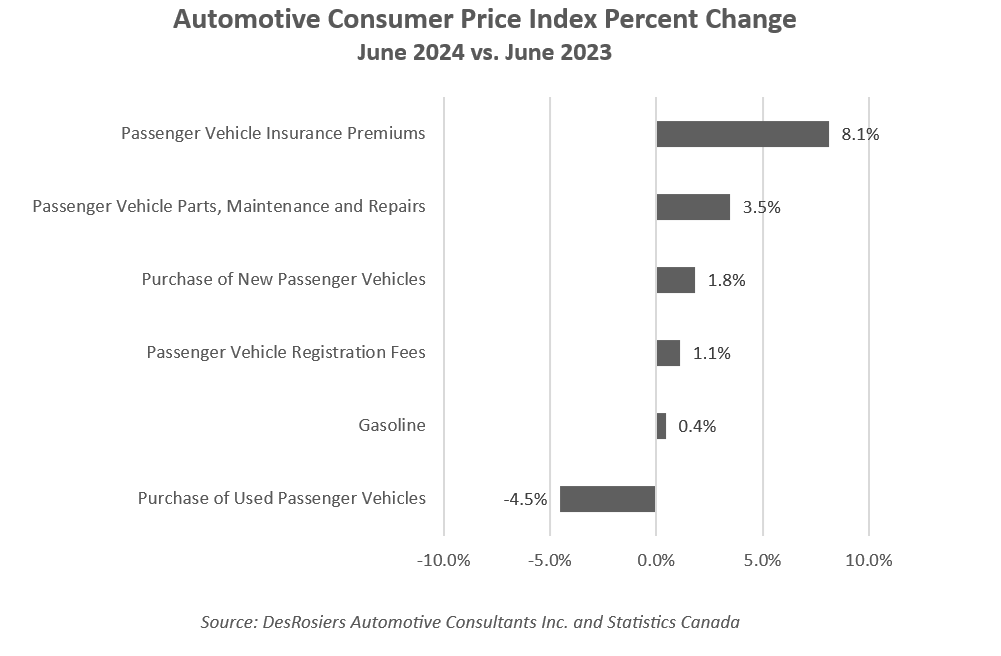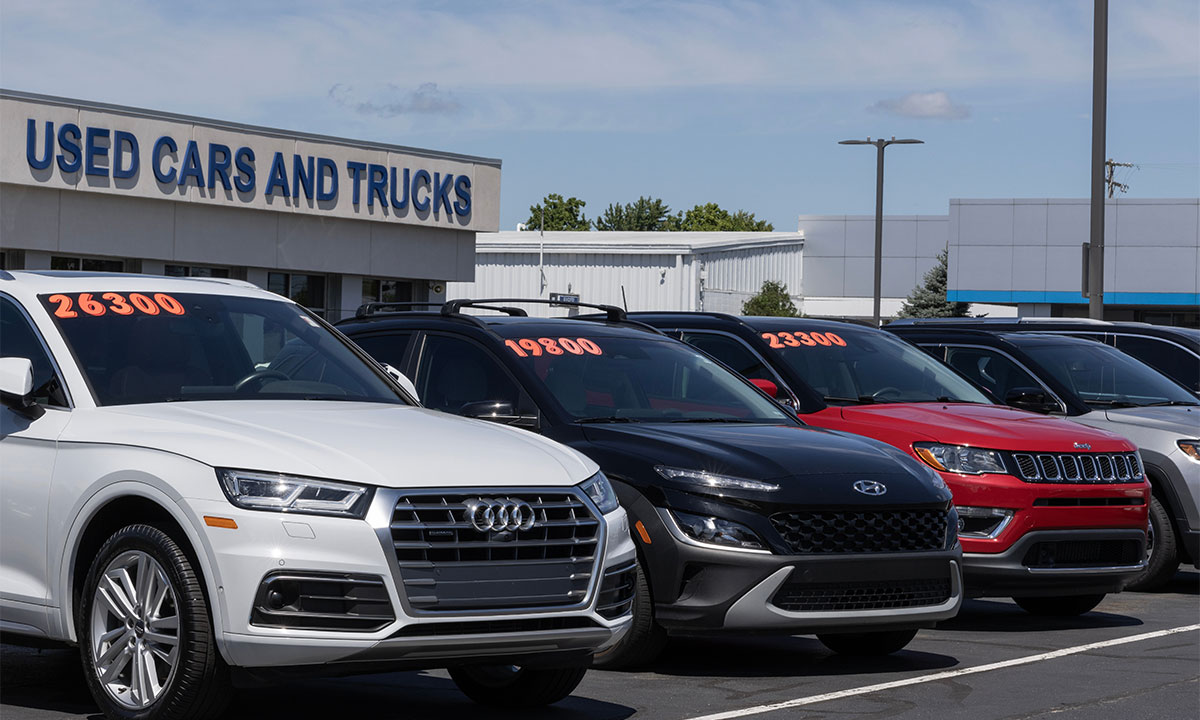
This time around, the Canadian used wholesale market saw a decline of -0.40% in pricing for the week ending on Sept. 28, according to Canadian Black Book.
Its Market Insights report revealed that car segment prices were down -0.23%, while the truck/SUV segments declined -0.56%. The largest declines came from
prestige luxury cars and mid-size cars in the car category, and mid-size luxury crossovers/SUVs and compact luxury crossovers/SUVs in the truck/SUV category.
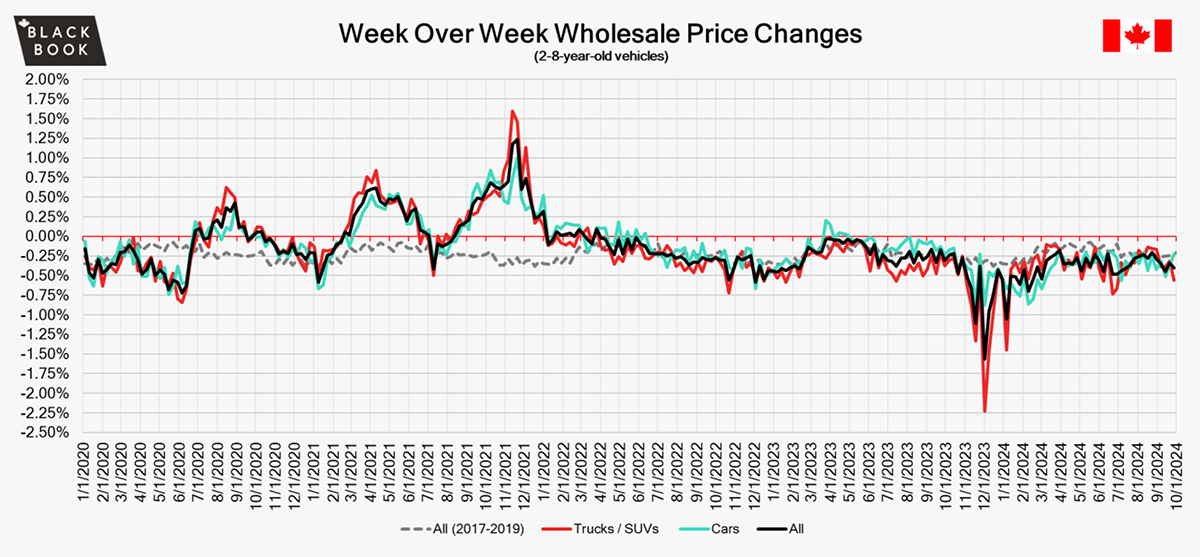
“The Canadian market continues a downward trend, with a decline similar to its previous week. Just over 36% of market segments experienced an average value change of more than ±$100, indicating a lower rate than the previous week,” said CBB in its update. “Among these, truck segments experienced a decline 25% greater compared to the previous week.”
In the car category, compact cars (-0.04%), sports cars (-0.09%), and luxury cars (-0.14%) experienced the smallest declines. Whereas prestige luxury cars (-0.72%), mid-size cars(-0.22%), and prestige sub-compact cars (-0.21%) saw the largest declines.
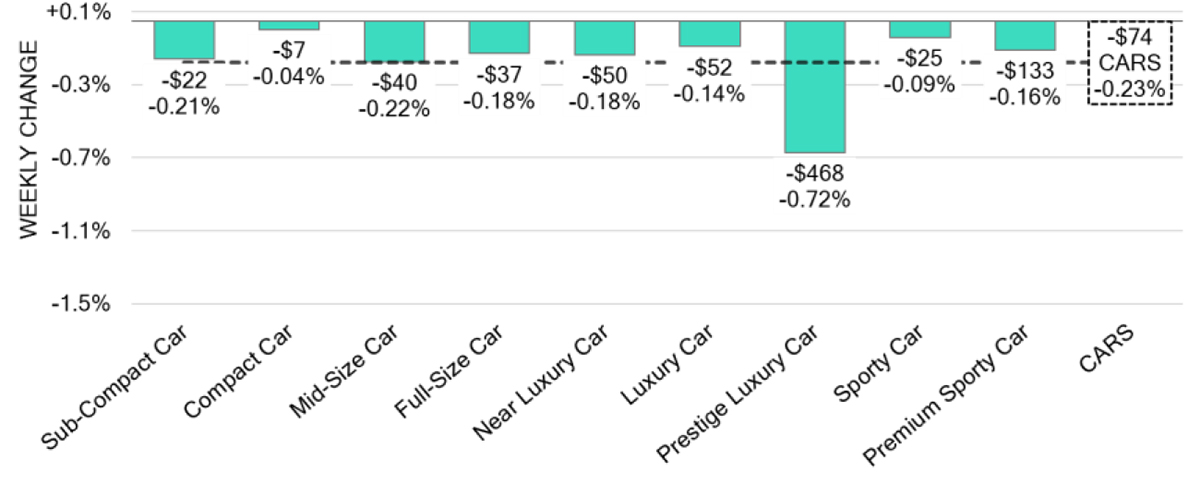
For trucks/SUVs, mid-size luxury crossovers/SUVs (-1.05%), compact luxury crossovers/SUVs (-0.81%), compact crossovers/SUVs (-0.74%), and full-size pickups (-0.67%) experienced the largest depreciations. The smallest came from sub-compact luxury crossovers (-0.06%) and sub-compact crossovers (-0.09%).
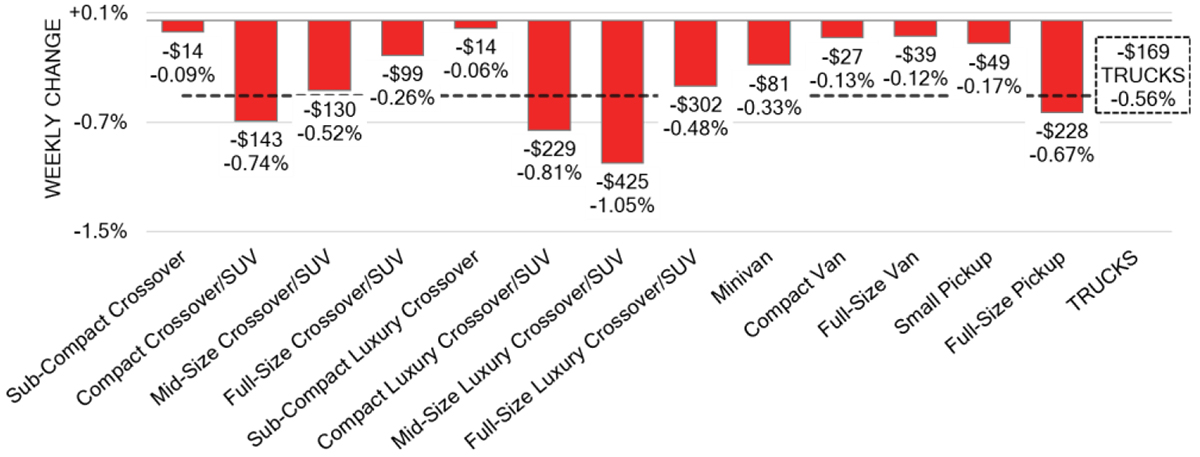
The average listing price for used vehicles remains stable, with the 14-day moving average at $34,500. The analysis is based on around 220,000 used vehicles listed for sale on Canadian dealer lots, according to CBB.
In other news, CBB said Equifax Canada reported a 54% increase in auto fraud year-over-year, due largely to fake credit applications and identity theft. Stellantis Chairman John Elkann is looking for a new CEO, as current head Carlos Tavares’ contract is up in 2026 — an apparently uncommon thing, due to the timing that his contract is ending. Porsche has named Trevor Arthur as its Canadian CEO.
And CBB said “National Security risks have been identified through Chinese-made software and hardware that is intended to provide connected vehicle technologies to models sold in North America.” They said the risks have led to “an industry request on banning these products, effectively removing any opportunity for Chinese-made vehicles to be sold in the continent.”
dealer, C. auto, Lefko, P., Phillips, T., dealer, C. auto, & Lefko, P. (2024, October 2). Used vehicle prices down -0.40%; mid-size cars sees large decline. Canadian Auto Dealer. https://canadianautodealer.ca/2024/10/used-vehicle-prices-down-0-40-mid-size-cars-sees-large-decline/













